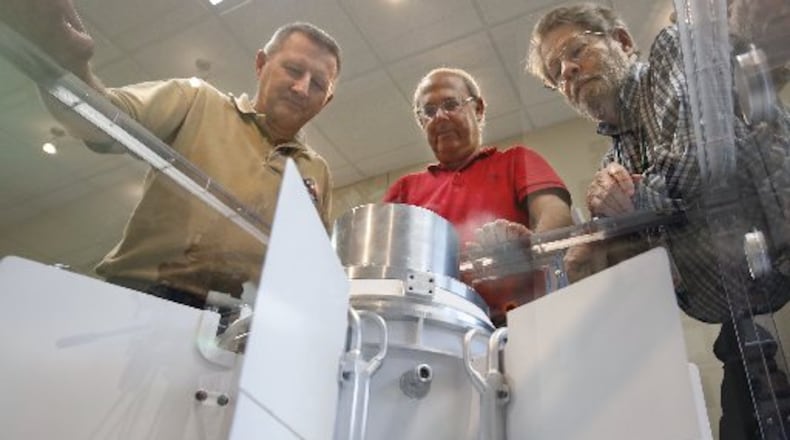The rover, which landed on Mars Thursday, is powered by radioactive plutonium generator, which traces its lineage back to the radioisotope thermoelectric generator invented by scientists at what was the Mound complex in Miamisburg in the mid-1950s.
Credit: Uncredited
Credit: Uncredited
Mound is the birthplace of the technology more so than the materials, “because obviously the materials have evolved quite a lot” in the decades since, said University of Dayton Research Institute (UDRI) scientist Chad Barklay, a former Mound employee with his UDRI colleague, engineer Allan Tolson.
“That was very exciting the day it landed, and it landed safely,” Tolson said. “I know I was very humbled but pleased, happy. It has been a part of history, something you can tell your kids and grandkids about. It’s overwhelming sometimes.”
The Mound complex, atop a hill in Miamisburg, manufactured nuclear weapons parts and performed nuclear materials research for decades. The site operated from 1948 to 2003 and at its peak employed about 2,500 people, occurpying 116 buildings covering 306 acres.
The work that was there was eventually moved to Idaho, and the area today is a private business park. Barklay and Tolson chose not to move to Idaho and they both landed at UDRI, where this type of generator was tested extensively, to determine how well it can weather the extremes of space travel and Martian climate.
With cots and sleeping bags, Barklay and Allen Tolson spent a memorable 36 hours camped next to the one of the generators in 2017 while they heated the unit to a temperature of 428F to see how the Mars Curiosity Rover power system would hold up.
Nuclear power has distinct advantages over solar panels, which the Mars rovers also use. The Opportunity rover was knocked out of commission when a planetary dust storm blocked it from the sun’s light in 2018. The rover was declared “dead” the next year.
The new rover still faces plenty of dangers. But nuclear power means NASA scientists can mostly rest easy about that possibility.
“That’s why you need a thermoelectric generator of some sort,” Barklay said.
This isn’t the same grade of plutonium used in nuclear weapons, and it is robustly encased with lasting protection as a primary goal.
Barklay is group leader for UDRI’s advanced high-temperature materials research effort, performing qualification and evaluation tests on generators in support of not only the Curiosity and Perseverance rovers but future deep-space missions.
Their research is sponsored by the Department of Energy and helps shed light on the performance of the power units over time, UDRI said.
UDRI’s work is not the only local contribution to Mars exploration. Technology created by L3Harris in Mason is helping NASA receive key data and images from the rover.
About half of L3′s nearly 800 Mason employees were directly or indirectly involved with the mission.
“There’s not a lot of people who know there’s a really significant space company right here in Ohio with a lot of employees, a lot of good high-tech jobs,” Mark Dapore, chief technologist for L3Harris, told the Dayton Daily News last week.
About the Author



